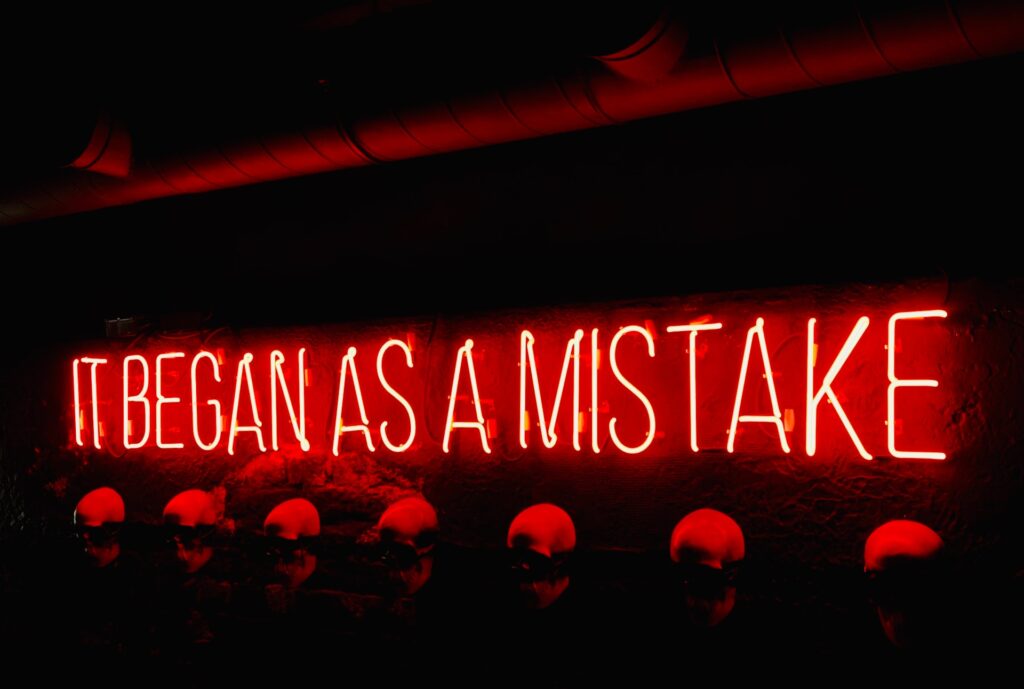Ever heard the phrase, “It’s not what you say, it’s how you say it?”
This golden piece of wisdom is at the heart of our discussion today – the tone of voice in content creation. Your words may be eloquent and your ideas groundbreaking, but if your tone doesn’t resonate with your audience, your message might just fall flat.
Let’s dive into the world of tones of voice and discover how this subtle tool can make or break your brand’s communication strategy.
From understanding its relationship with brand identity to identifying your product’s ideal tone and implementing it effectively, you’ll learn how to transform your content creation approach.
What Are Tones of Voice?
Tones of voice refer to the distinct personality or character your brand expresses through its communication. It’s not about what you say but how you say it – the emotional inflection and attitude that color your words. This could be authoritative, friendly, cheeky, professional, casual, first-person friend, second-person expert, or any number of other descriptors.
Why Tones of Voice Matter
Your tone of voice is crucial because it sets the stage for how your audience perceives your brand. It influences how your message is received and whether it resonates with the audience. The right tone can make your audience feel understood, valued, and connected to your brand, inspiring trust and loyalty.
Examples of Tones of Voice
Different brands have different tones of voice, each uniquely suited to their identity and target audience. Let’s take a look at a few examples:
- Professional and Formal: This tone is often used by financial institutions, law firms, and corporate businesses. It exudes authority, trustworthiness, and competence.
- Friendly and Approachable: Many consumer-focused brands use this tone to make their audience feel comfortable and welcomed. It’s like chatting with a good friend.
- Witty and Humorous: Brands targeting younger demographics often use this tone. It’s engaging, memorable, and makes the brand feel relatable and human.
- Inspiring and Motivational: Often used by wellness and personal development brands, this tone empowers the audience and encourages them to take positive action.
- Educational and Informative: This tone is common among educational institutions and organizations offering complex services. It aims to educate the audience in a clear and concise manner.
Tones of Voice and Perspective
In addition to the emotional inflection and attitude, tones of voice also encompass the perspective from which you communicate. This is often referred to in terms of first person, second person, and third person.
- First Person: The use of “I” or “we” makes your content feel personal and direct. This can foster a sense of intimacy and authenticity, making it feel like you’re having a one-on-one conversation with your reader.
- Second Person: Using “you” engages the reader directly, making them feel involved and addressed personally. It’s a great way to make your content more interactive and engaging.
- Third Person: The use of “he”, “she”, “it”, or “they” provides a more detached perspective. This can be useful when you want to present information objectively or discuss a third party.
The perspective you choose for your tone of voice should align with your brand’s identity and the message you want to convey to help generate leads. Whether you’re sharing a personal story, offering advice, or providing unbiased information, the right perspective can enhance the effectiveness of your communication.
Remember, your brand’s tone of voice should be consistent across all platforms and communications to maintain a cohesive brand identity. Moreover, it must align with your brand values, mission, and audience’s expectations to be effective.
The Relationship Between Tone of Voice and Brand Identity

Your brand’s tone of voice is more than just a stylistic choice—it’s an integral part of your brand identity. It reflects the personality of your brand and communicates your core values to your audience.
Reflecting Brand Personality
Every brand has a unique personality, just like people do. This could be fun-loving, serious, sophisticated, down-to-earth, or anything in between. Your tone of voice is one of the ways you express this personality.
If your brand is playful and youthful, for example, a casual, humorous tone of voice can bring that to life. On the other hand, if your brand is more serious and professional, a formal, authoritative tone might be more appropriate.
Communicating Brand Values
Your tone of voice also plays a key role in communicating your brand values. These are the guiding principles that define what your brand stands for. If one of your core values is transparency, for instance, a straightforward and honest tone of voice can help convey that. If innovation is a key value, a forward-thinking, energetic tone might be a good fit.
By aligning your tone of voice with your brand personality and values, you can create a strong and consistent brand identity. This not only helps your brand stand out but also builds a deeper connection with your audience. They’ll know what to expect from you and what you stand for, which can foster trust and loyalty.
How To Identify Your Ideal Tone of Voice

Choosing the right tone of voice for your product or service is a crucial aspect of your brand strategy. It’s about understanding who your audience is, what your brand stands for, and how your product or service fits into the lives of your customers.
Factors To Consider When Choosing a Tone of Voice
Before you can identify your ideal tone of voice, consider the following factors:
- Target Audience: Who are you speaking to? What kind of language do they use, and what tone will resonate with them? Understanding your audience’s demographics, interests, and needs can guide you in choosing a suitable tone.
- Product/Service Type: What you’re offering can also influence your tone. Is it a serious, high-stake product like insurance or a light-hearted, fun product like a party game? The nature of your product or service can dictate an appropriate tone.
- Brand Values: Your tone should align with your core values. If you value transparency, a straightforward tone may work well. If creativity is a key value, a playful and innovative tone could be a good fit.
5 Steps To Identify Your Ideal Tone of Voice
Once you’ve considered these factors, follow these steps to identify your product or service’s ideal tone of voice:
- Define Your Brand Personality: Start by defining your brand’s personality traits. Are you friendly, professional, quirky, or inspiring?
- Understand Your Audience: Conduct audience research to understand their language, preferences, and expectations. This can help you tailor your tone to their liking.
- Analyze Competitors: Look at how similar brands communicate. While you shouldn’t copy them, you can gain insights into what works and what doesn’t in your industry.
- Test Different Tones: Experiment with different tones in your communication and monitor the response. This can help you gauge what resonates best with your audience.
- Refine and Standardize: Once you’ve found a tone that works, standardize it across all your communications for consistency.
Remember, identifying your ideal tone of voice is an ongoing process. As your brand evolves, your tone might need to evolve too. Regularly review and adjust your tone to ensure it continues to align with your brand and resonate with your audience.
Best Practices for Implementing Your Chosen Tone of Voice

Implementing your chosen tone of voice effectively requires consistency and adaptability. Here are some best practices to ensure your brand’s voice remains true across different content types and contexts.
Maintaining Consistency in Tone
Consistency is key when it comes to implementing your chosen tone of voice. Here are some tips:
- Create a Style Guide: Develop a comprehensive style guide that outlines your brand’s tone of voice. It should include examples of how to use your tone in different types of content. This can serve as a reference for anyone creating content for your brand.
- Train Your Team: Make sure everyone who communicates on behalf of your brand—whether they’re writing blog posts, social media updates, or customer emails—understands your tone of voice and how to use it.
- Review Regularly: Regularly review your content to ensure it aligns with your chosen tone of voice. If you notice inconsistencies, take the time to correct them and identify any patterns that could indicate a need for further training or clarification.
Adapting Tone of Voice According to Context
While consistency is important, it’s also crucial to adapt your tone of voice to suit different contexts. Here’s how:
- Understand the Platform: Different platforms call for different tones. A LinkedIn post might be more formal, while a tweet can be more casual. Understand the norms of each platform and adjust your tone accordingly.
- Consider the Content Type: The type of content also affects the tone. A product description might require a more informative tone, while a blog post might be more conversational.
- Reflect the Situation: In certain situations, you may need to modify your tone. For example, responding to a complaint might require a more serious and empathetic tone than usual.
Remember, your tone of voice is a dynamic aspect of your brand. While it should remain consistent overall, don’t be afraid to adapt it as needed to fit different contexts and meet your audience’s evolving expectations.
Common Mistakes to Avoid When Using Tones of Voice

Using a consistent and appropriate tone of voice is crucial for effective branding. However, there are some common pitfalls to watch out for:
- Lack of Consistency: Changing your tone frequently can confuse your audience and dilute your brand identity. To avoid this, establish a clear brand voice guideline and ensure all team members adhere to it.
- Overcomplicating the Tone: A complicated or overly sophisticated tone can alienate your audience. Keep your tone simple and accessible. It should feel natural and authentic, not forced or contrived.
- Ignoring Your Audience’s Preferences: If your tone doesn’t resonate with your target audience, it won’t be effective. Avoid this by conducting audience research and tailoring your tone to their preferences and expectations.
- Neglecting the Context: Using the same tone in every situation, regardless of context, can come across as tone-deaf. Be mindful of the platform, content type, and situation, and adjust your tone accordingly.
- Inauthenticity: Trying to adopt a tone that doesn’t align with your brand’s personality and values can make your brand seem inauthentic. Stick to a tone that truly represents who you are as a brand.
- Failing to Evolve: As your brand grows and evolves, your tone of voice should too. Don’t make the mistake of sticking rigidly to an outdated tone. Regularly review and adjust your tone to ensure it continues to reflect your brand accurately.
By being aware of these common mistakes and taking steps to avoid them, you can use your tone of voice effectively to enhance your brand identity, connect with your audience, and differentiate yourself from competitors.
Harnessing the Power of Tone

As we wrap up this discussion of tones of voice, remember that your tone is not just a stylistic choice—it’s a powerful tool that can shape your brand’s identity and influence how your audience perceives your message.
From understanding what a tone of voice is to identifying your ideal tone and implementing it effectively, we’ve covered a lot of ground. But it doesn’t end here. Experiment with different tones, learn from your successes and failures, and continually refine your approach.
Remember, the right tone can make your words resonate, inspire action, and build trust with your audience. So take the reins and start shaping your communication strategy with the power of tone today!
Unlock Your Potential with Premium Content
Elevate your real estate and business game with our content creation services. Don’t miss out on the opportunity to stand out. Contact us today and take the first step towards success!
